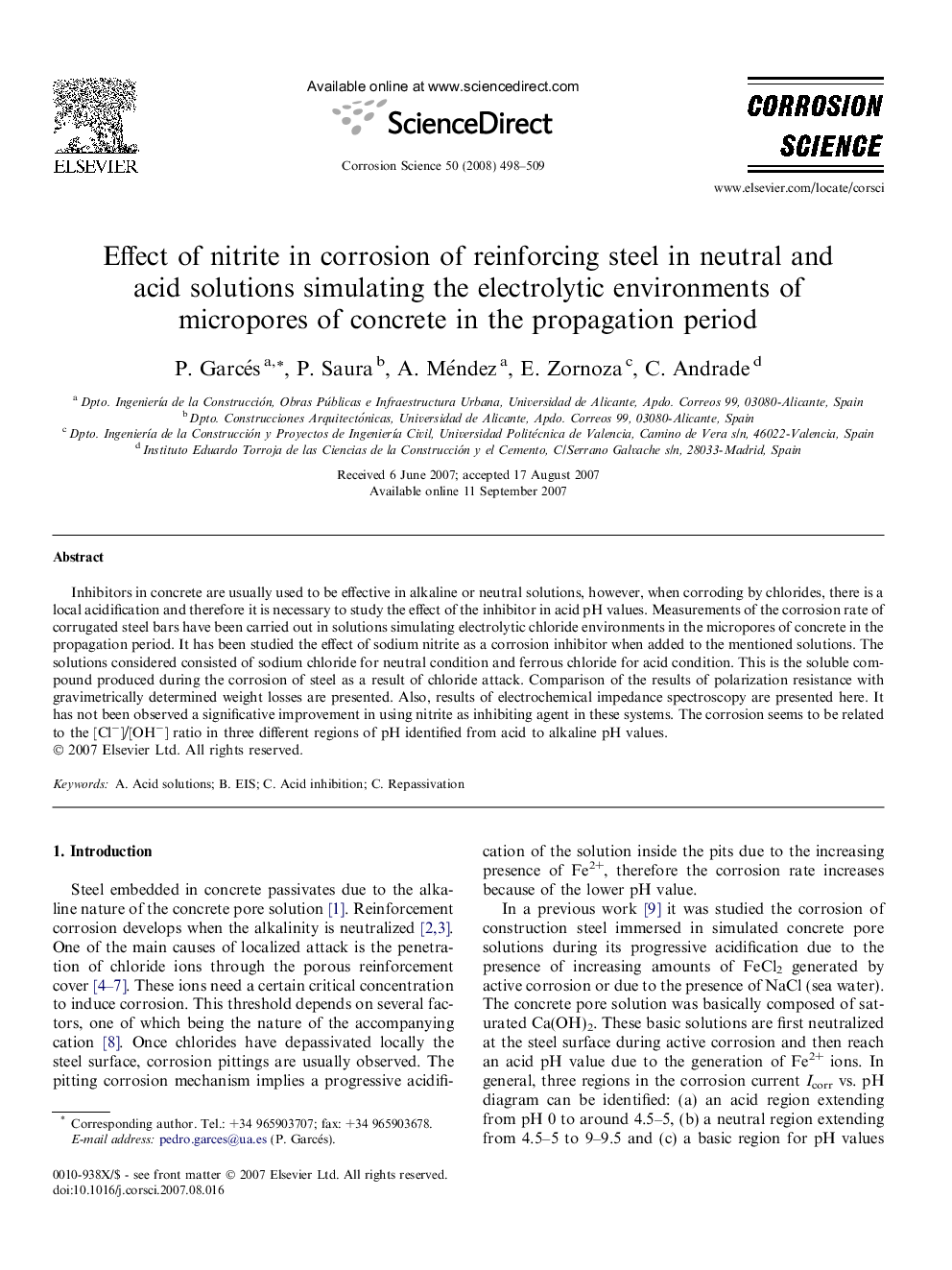| Article ID | Journal | Published Year | Pages | File Type |
|---|---|---|---|---|
| 1471621 | Corrosion Science | 2008 | 12 Pages |
Inhibitors in concrete are usually used to be effective in alkaline or neutral solutions, however, when corroding by chlorides, there is a local acidification and therefore it is necessary to study the effect of the inhibitor in acid pH values. Measurements of the corrosion rate of corrugated steel bars have been carried out in solutions simulating electrolytic chloride environments in the micropores of concrete in the propagation period. It has been studied the effect of sodium nitrite as a corrosion inhibitor when added to the mentioned solutions. The solutions considered consisted of sodium chloride for neutral condition and ferrous chloride for acid condition. This is the soluble compound produced during the corrosion of steel as a result of chloride attack. Comparison of the results of polarization resistance with gravimetrically determined weight losses are presented. Also, results of electrochemical impedance spectroscopy are presented here. It has not been observed a significative improvement in using nitrite as inhibiting agent in these systems. The corrosion seems to be related to the [Cl−]/[OH−] ratio in three different regions of pH identified from acid to alkaline pH values.
